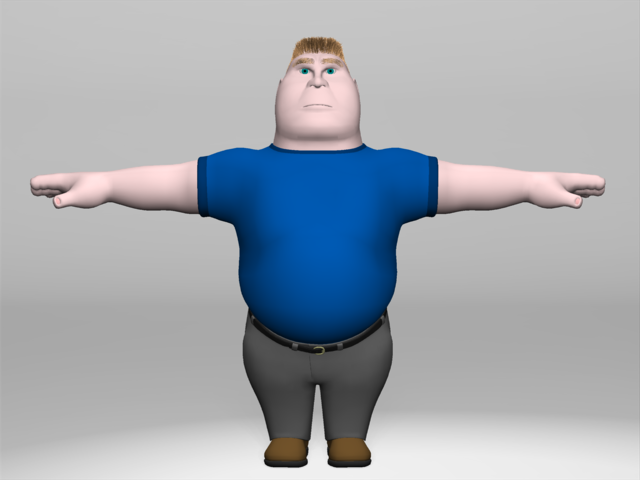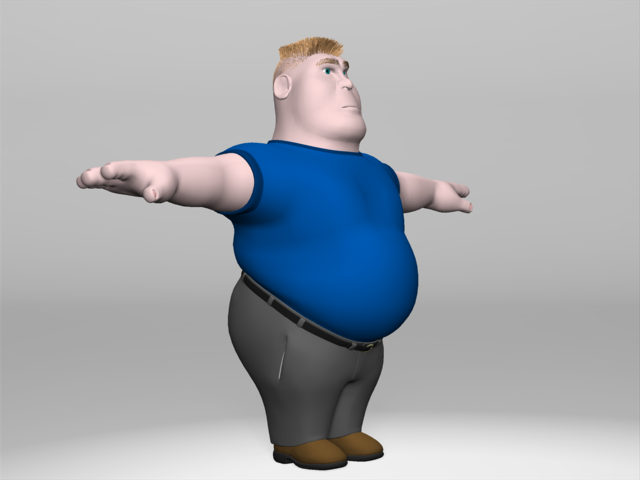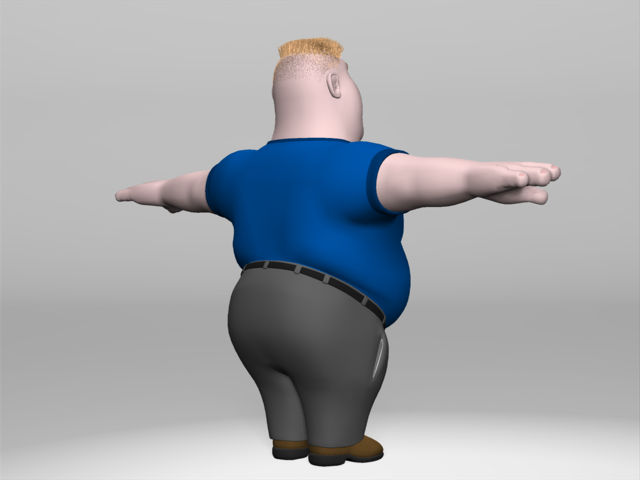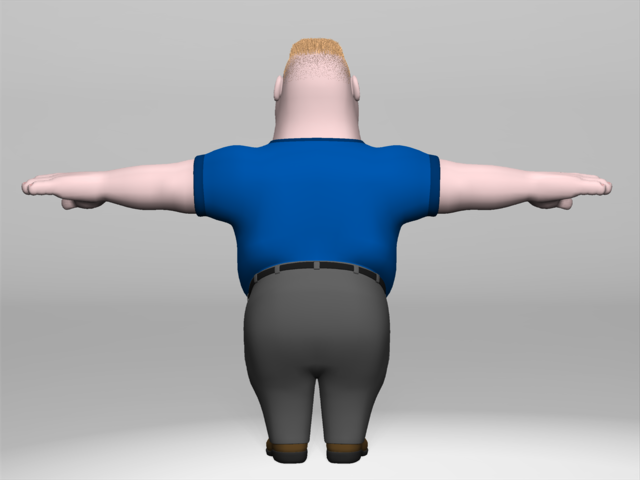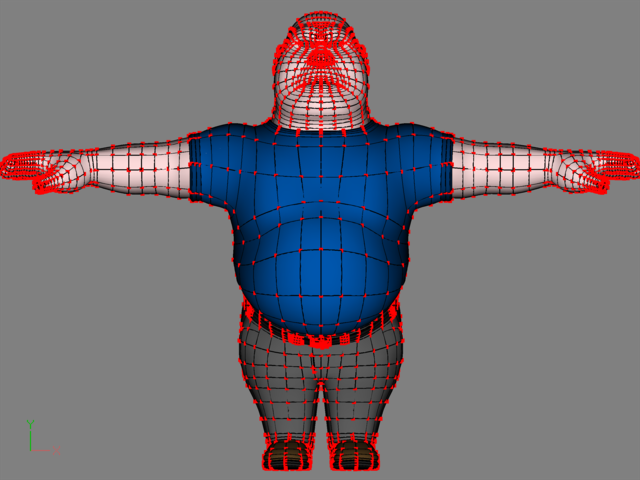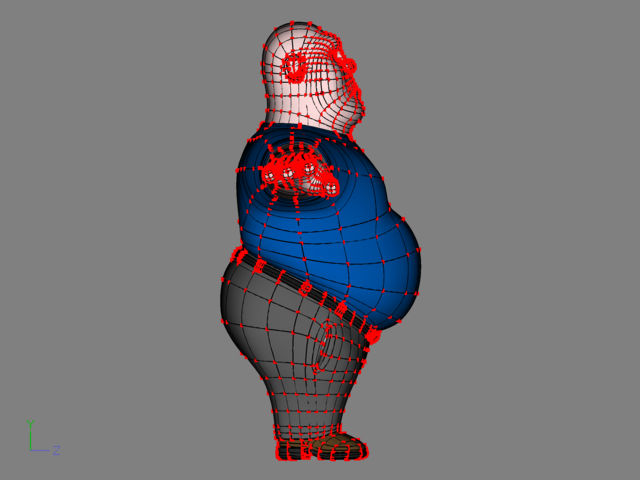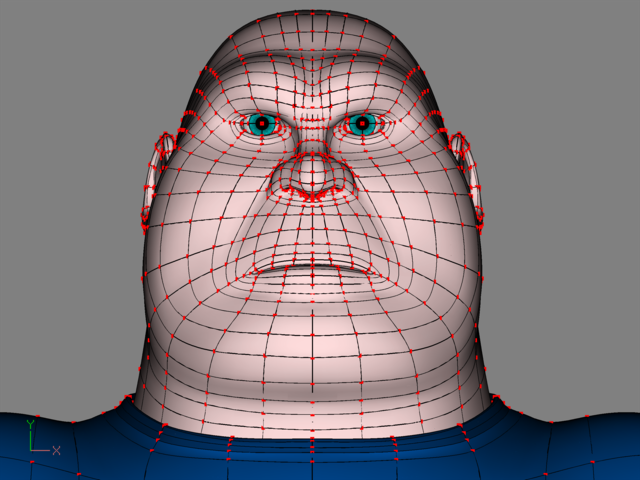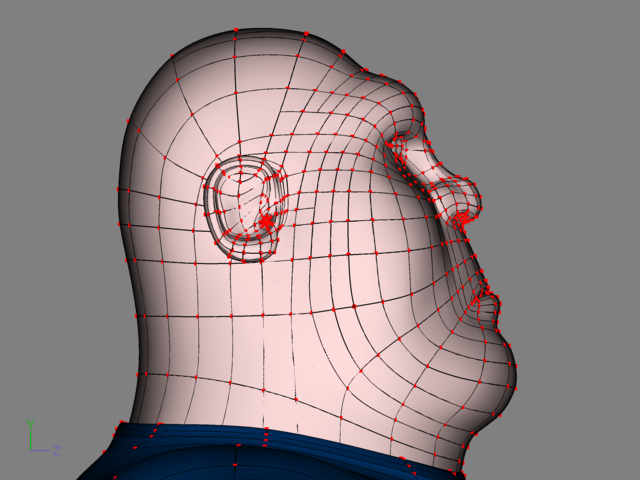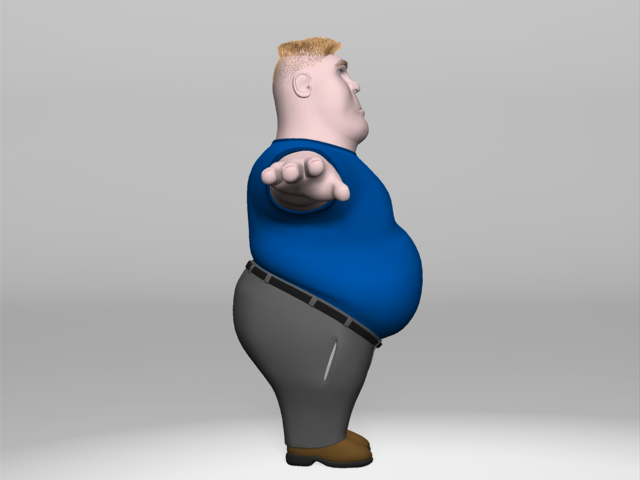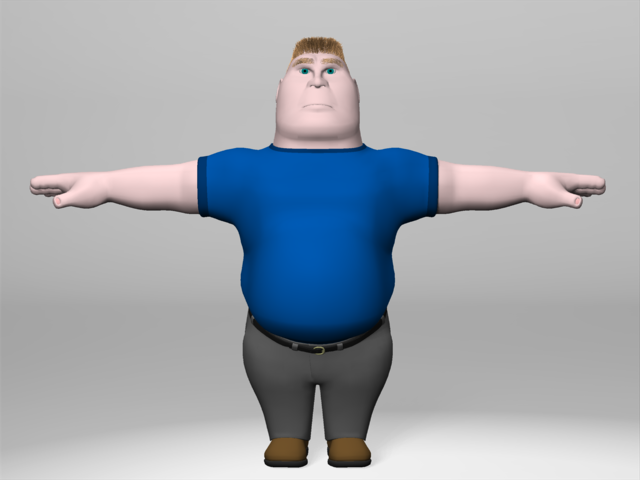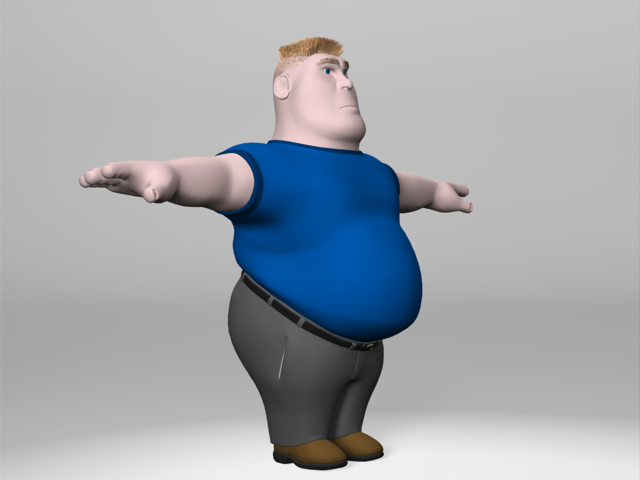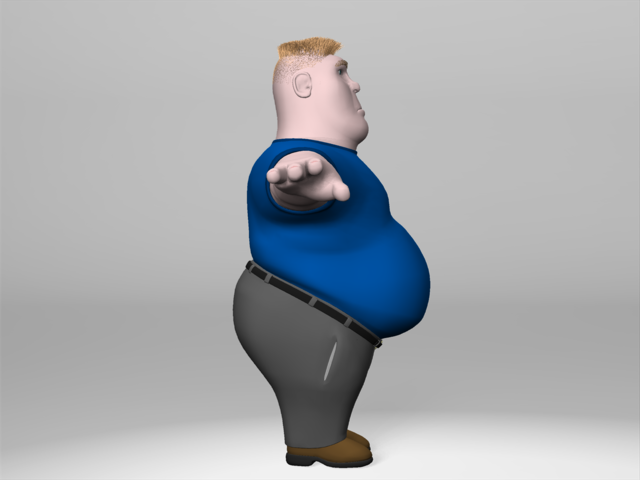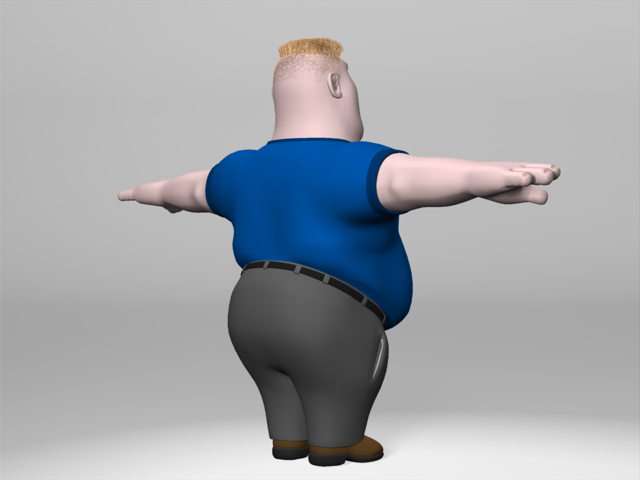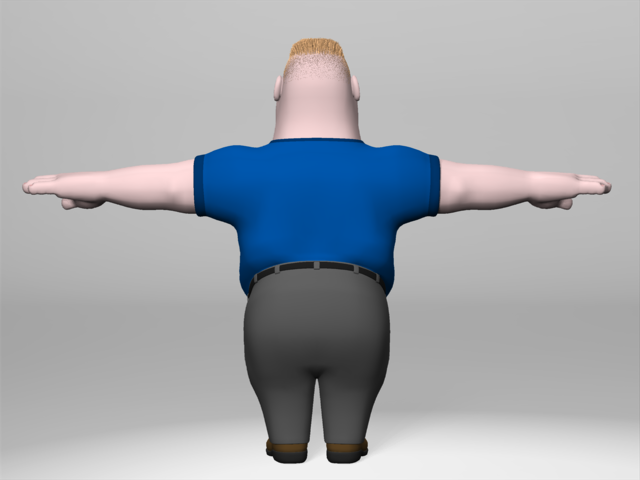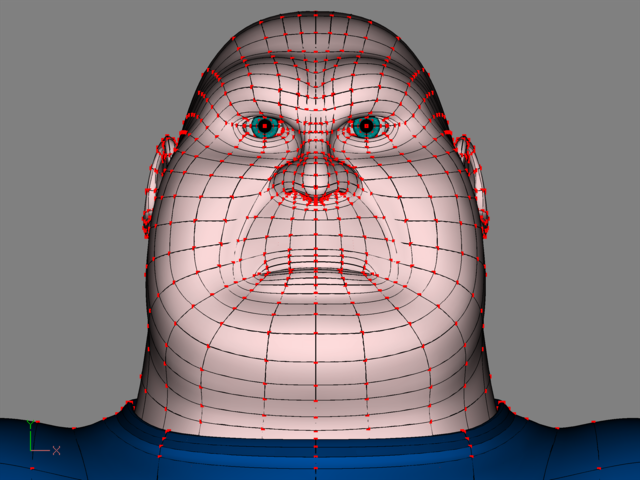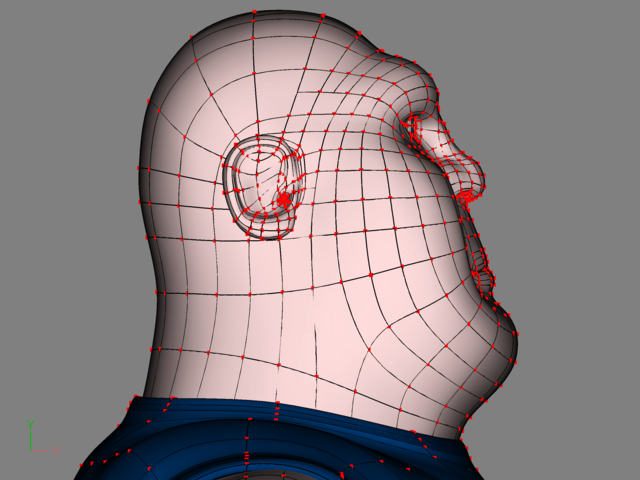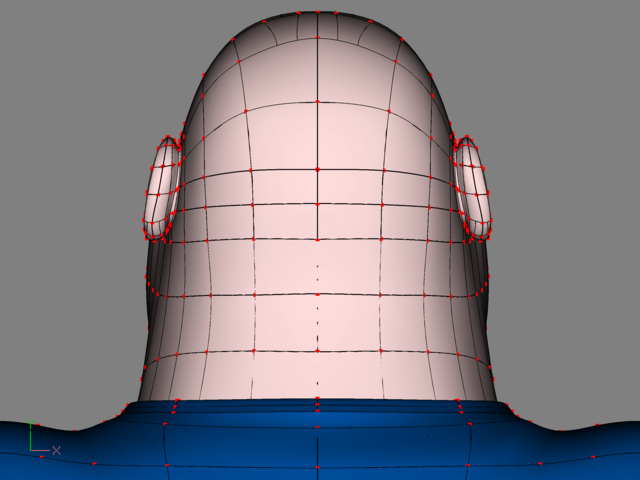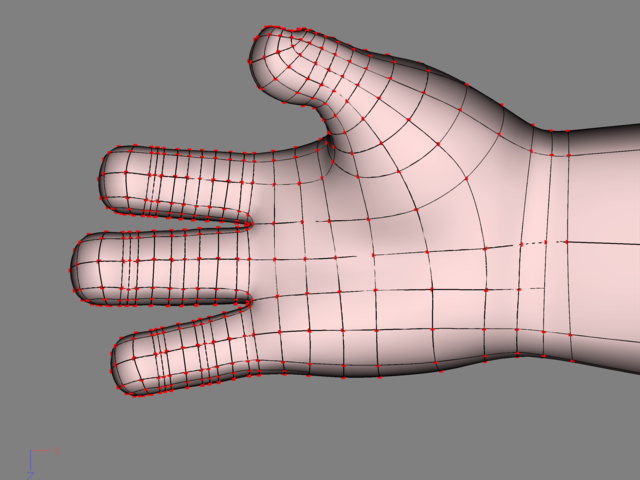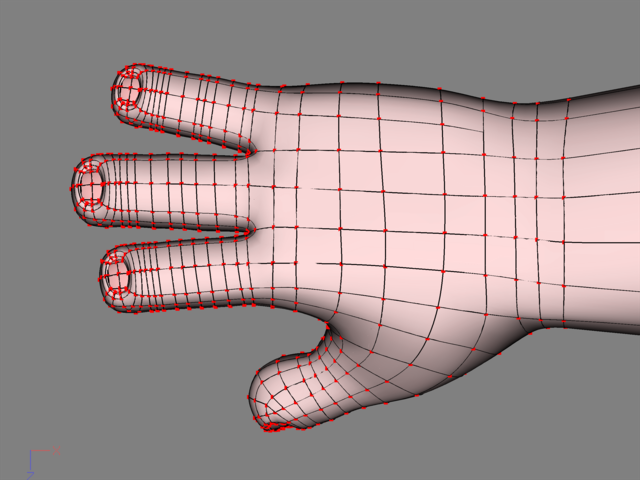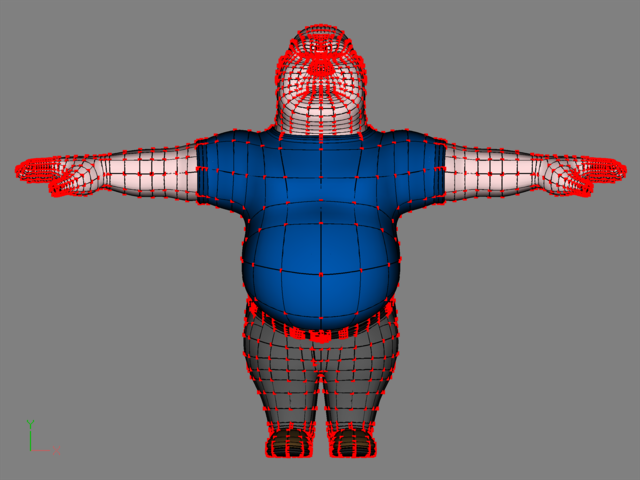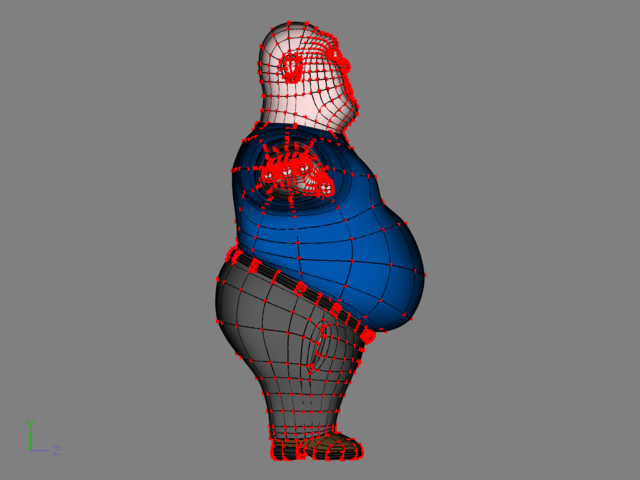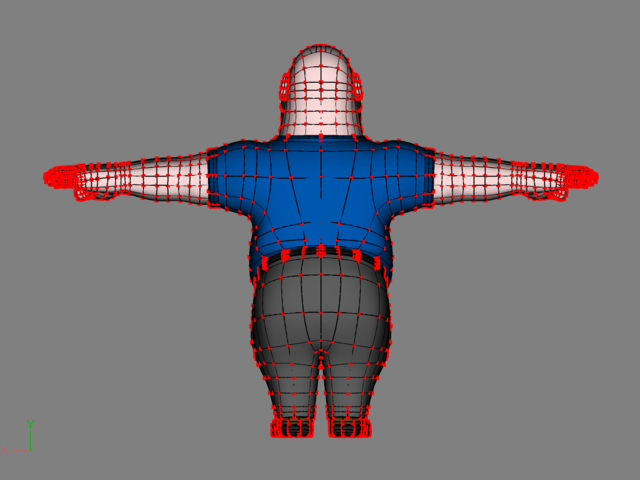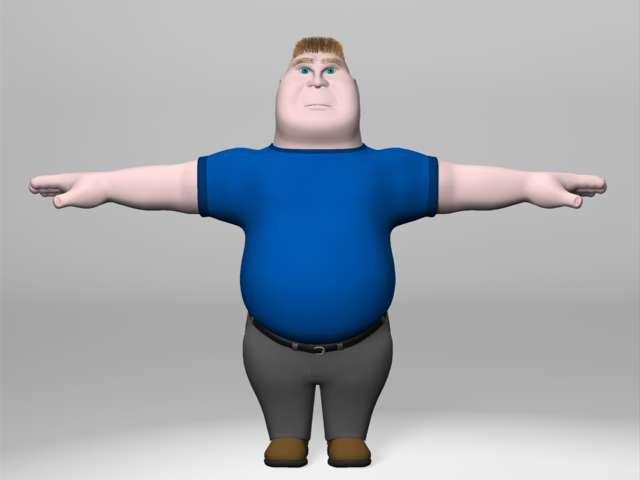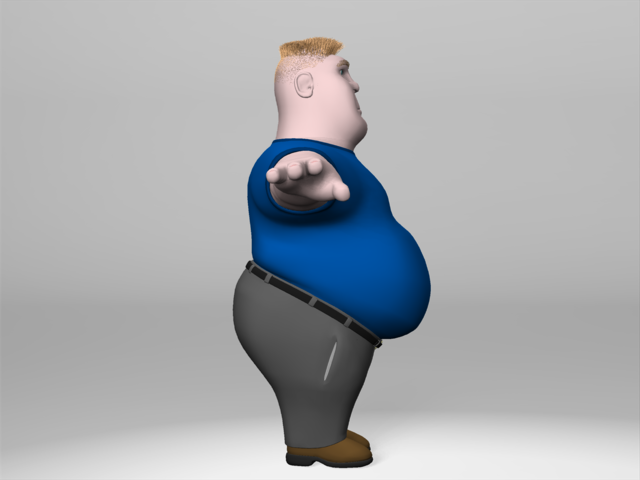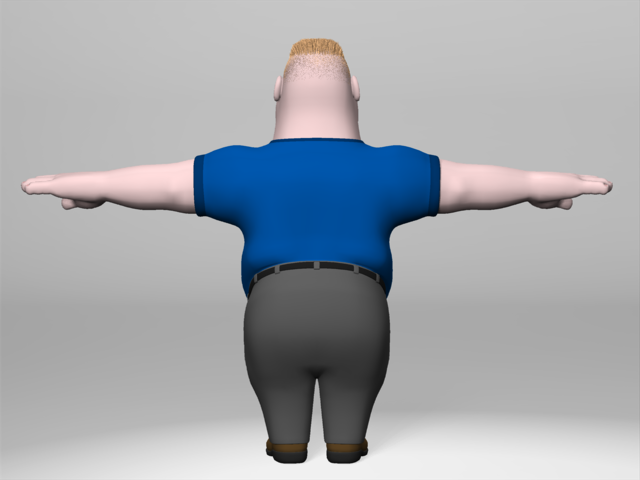-
Posts
5,790 -
Joined
-
Last visited
-
Days Won
59
Content Type
Profiles
Forums
Events
Everything posted by itsjustme
-
I'm probably not understanding what you're thinking, Robert. I do know that a "roll like" wouldn't need a compensate since its' position and present rotation doesn't matter.
-
Thanks, Mark! You were right about the fingers...hopefully, I'll have something to show on those in a day or two.
-
Looks good...perfect. Thanks for your help, Nancy!
-
When I first read your post Eric, I think I misunderstood. Now that I read it again, I think you mean that the updated face should be more like the version that is my present avatar? If that's the case, is it that the updated version looks less friendly? My present avatar image is from a frame that wasn't the default pose for the face...he's sort of smirking. Or is it something else?
-
Here's an update that should fix Bertram's torso and face. The five point patches on the corners of the mouth are moved to a better place, I eliminated the hooks under the nose, added some chubbiness to the cheeks, put a little more pout on the lower lip, added to the "love handles" and pulled the stomach in some. I'm still working on the hands, so ignore them on these.
-
I think I agree, Eric...if I'm understanding "Mayberryish" to mean like a character from the "Andy Griffith Show"? I unintentionally took some of that out of him in rounding up the head, but I think I've gotten it back in the next version I'll post late tonight. Bertram is a personal project that I've been wanting to do for a long time. It started as a single animation that I wanted to do of an overweight redneck gymnast that smokes and drinks heavily and has evolved into a series of animations that I'd like to do with him in several situations (I think I've got seven or eight at the moment...we'll see how many will actually get done). I think of him as sort of a "Yosemite Sam", in that he is always the same person no matter the setting or costume. This is sort of a push for myself to actually get some of the Bertram stuff finished and an attempt to improve in the areas that I need to work on (there are quite a few of them).
-
I should be posting some images late tonight, Mark. I think he lost a little personality in his face when I made it less flat, so I added back some chubbiness to his cheeks, moved a five-pointer that was at the corners of the mouth, got rid of a couple of hooks under the nose, increased the density of the splineage on the torso, increased the "love handles" pulled the gut in a little and am still in the process of tweaking the hands. You're probably right about the fingers, I'll add that to my checking tonight, thanks!
-
The good news is that there shouldn't be any difference between an older version of the InstallRig plugin and the most recently posted version, Sebastian. So, using the old one you have would be fine. I don't have a Mac, so I can't check that version of the plugin...if someone else on a Mac could confirm the problem, and one that we know works gets posted, I'll replace the one in the released version of the rig. I hope that made sense.
-
-
Very cool, Eric!
-
Thanks, Robert! His stubbiness is just how I saw him as a character...it is tougher to do the CP Weighting on a character like him though. He started off as a redneck gymnast that let himself go, I still want to do some animation of him doing gymnastics too. Initially, his gut was a lot bigger, but it would make it difficult for him to do things like sit at a desk. This is the third version of him that I've made, so he's gotten a lot of back-story since the first concept. I've rigged him more times than I can count and textured him three or four times...each version gets better as I get better at A:M. I used him when I was first learning rigging and building the first version of the face rig. Thanks adam&oliver! The first version of Bertram was made in 1998, so he's not based on Mr. Incredible, but there are similarities. As soon as the modeling is finalized, I'll start rigging him while making the updated Squetch Rig installation tutorial.
-
I think you're right, Nancy. The visuals helped a lot. Thanks! I'll do some more tweaking on him tonight. Eventually I'll get it nailed down.
-
Try these tutorials: Basic Splinemanship Continuity explained Understanding Gammas Hope those help.
-
You could try here or here. Hope that helps.
-
I did some modifying to Bertram's face and torso...I'm not sure if I went far enough or not, so I figured it would be good to get an opinion. I made his face less flat, added some slight "love handles" and brought some of the chest muscle under his arms. I'm presently working on his hands...I think one of the things Mark was seeing in the hands is that the knuckles needed to be on more of a slant. I put a simple hand rig in to check, and adjusting the middle and pinky knuckles made a big difference. While I've got the simple setup in the hand, I've got an experiment with the fingers that I'm going to try...hopefully, I'll be able to post the results in a couple of days.
-
Yves has a tutorial that starts here. Hope that helps, Sam.
-
Nice character so far, Sam! The only crit I have is that there are quite a few edges that look like they need beveling.
-
Nice so far, Mark! I did a little messing with it and didn't find any problems...it seems to handle very well. I'll do some more testing over the next couple of days. Top notch additions! Thank you for all of your hard work!
-
Controlling an arm (or any other limb) using "FK" (forward kinematic), the controls work from the top down...bicep to forearm to hand. Meaning that if you move the bicep, everything below it in the chain moves and if you move the hand, it doesn't affect anything higher in the chain (forearm and bicep). If you use "IK" (inverse kinematic) controls, moving the hand will move the entire arm. "IK" limbs generally use the "kinematic" constraint on the end bone of a chain of bones, that will make the chain attempt to reach the IK target (which is generally another hand controller in the case of an arm). To keep the chain from twisting in ways that an arm or leg aren't supposed to move, the IK setup will use a few other constraints as well. In A:M (after v13), you can set up the FK and IK constraints in a way where they will make the switch without the arm or leg moving. In FK, you make the IK controls move like the FK controls. Then, in IK, you make the FK controls move like the IK controls. I have attached a ZIP containing cut-down versions of the arm and leg setup from the Squetch Rig as examples. Hope that helps, Muster. v13_IK_FK_switch_examples.zip
-
As Mark said, if we haven't purchased Barry's tutorials, we wouldn't be familiar with the rig you are installing. Without an example of the rig and your attempt at installing it, most of us would have trouble helping you, Jason. I'm not sure of the percentages, but I think most people install a standard rig...there are also people that roll their own though. The three most common rigs are the 2001 rig, TSM and the Squetch Rig.
-
That's one of the things I want to do with him...the way he's dressed now is for a series that I want to do with him working in an office environment. I've got a lot of things I want to do, but I'm not sure how many will actually happen yet.
-
Thanks Mark! I was going for stumpy fingers on sort of "ham hands"...having only three fingers might make it look too extreme. I haven't done any experiments to make sure he can grip things well yet, just some quick guess-work. The hair has a couple of maps, several length maps just to define the hairline and a density map for the stubble so that it fades in as it gets to the main section of hair. Thanks, Ken! He is harsher than the avatar...I wanted a little frown built into his relaxed face. I'll be doing some tests with the fingers before I consider them final, but I wanted "ham hands", so that's the way I'm leaning. His face may be a little flat, I was going for sort of a "bulldog" type appearance...I'll do some double-checking, maybe I went a little too extreme. He'll get a little more color once he's textured. LOL! I think you're right, Nancy...he could probably use some "love handles". Thanks for the constructive criticism! When you're looking at the small stuff a lot, it helps to have a few other sets of eyes. I'll give him another going-over tonight and see what happens.
-
Here are some stills and a turnaround Quicktime (H264 encoded video) of Bertram. The only texturing at this point is the iris' and hair...everything else will be done after he's rigged. Modeling isn't really finished until the character is rigged, and any modeling changes would affect decals. I've had previous versions of Bertram, but my modeling wasn't as good when I made them...the last version was made about four years ago. I started over and free-handed most of it, used the previous version of Bertram to get the facial proportions similar and used a rotoscope from an online catalog for the boots. One thing to remember if you use a catalog picture of a boot as a rotoscope...the toes will be flatter if there is a character/person with weight in them. When I initially modeled the boots, I made them like the catalog picture...which had Bertram's toes way too curled. Bertram_turnaround_07_04_2008_H264.mov
-
The "Project Bertram" area is where I'll post all things related to the character "Bertram" (I've been using an old version of him as my avatar, I'll update that soon)...he's the main character in several small animations that I want to try to get done. Bertram is a chain-smoking, beer drinking Texas redneck (if you're familiar with the comedy of Jeff Foxworthy, Ron White, Bill Engvall or Larry the Cable Guy...that's what I mean). I think of him as being like Yosemite Sam, in that he's always the same guy no matter what the setting or costume. This project, actually it's several small projects with a common main character, is what I'm going to use to try to push what I know and try a lot of things that I've never done...I'm not sure I'll be able to do all of them, but I'm going to try. Questions, comments and suggestions/critiques are always welcome. As the project progresses, I'll be releasing things that might be helpful to other members of the community...tutorials, models, examples, etc. The first tutorial will be an update to the Squetch Rig installation tutorial...which I'm thinking will be posted in the "Rigging" section of the main forum. Thanks to Martin for providing this sandbox...I'll try to keep the area clean.
-
I'm really liking the style, Mark!









